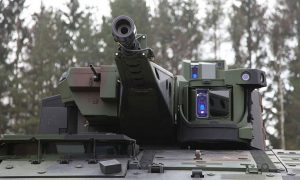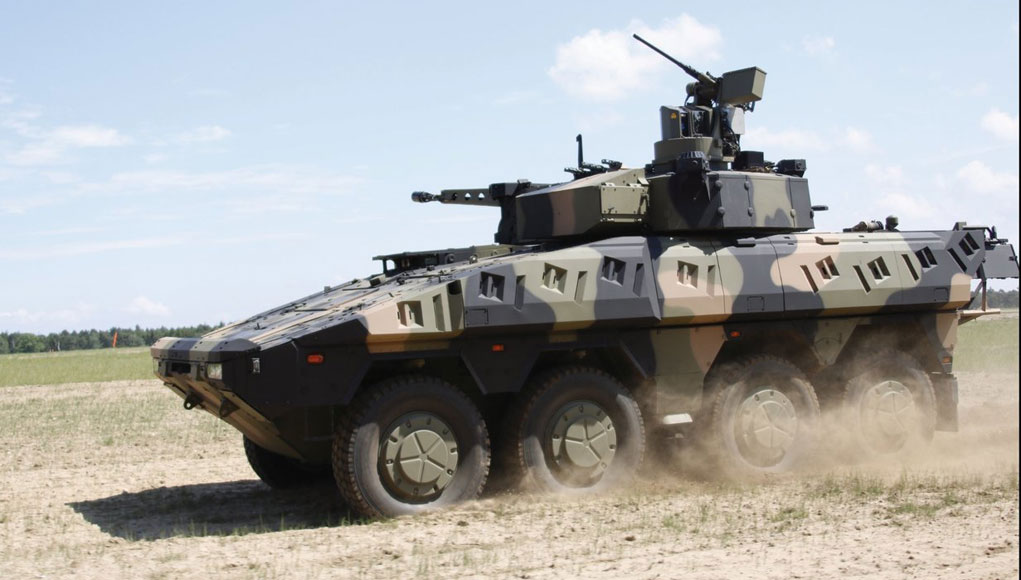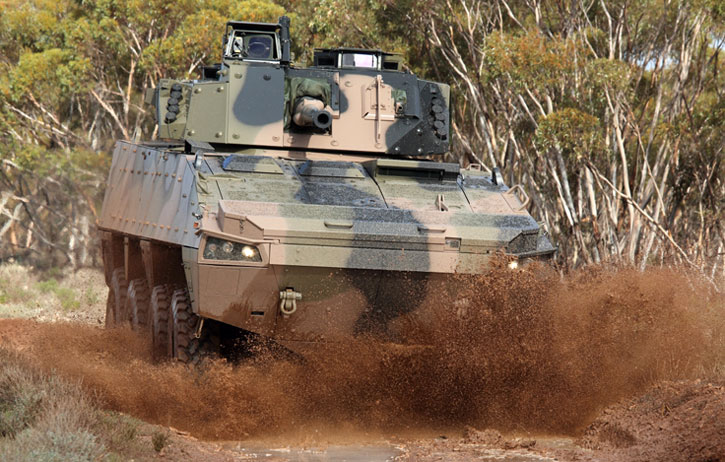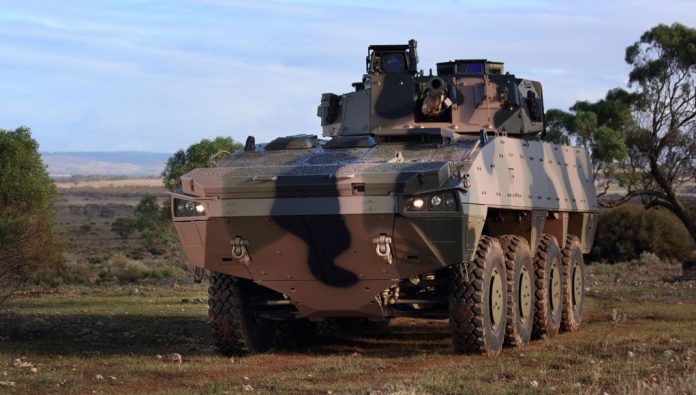The Australian Defense ministry announced that two European companies – British BAE Systems and German Rheinmetall, as the bidders shortlisted as potential suppliers of armored combat vehicles for the Australian Army’s Mounted Combat Reconnaissance Capability, also known as ‘Land 400 Phase 2’ program, to become the successor of the 8×8 ASLAV currently in service. The Australian Minister for Defence Industry, Christopher Pyne, announced.
The two AFV shortlisted are the Boxer and AMV-35, both are 8×8 wheeled vehicles, offering better protection and mobility over the current ASLAV, and equipped with a manned turret mounting an automatic gun. The Australian requirement is for 225 vehicles in seven variants.

The Boxer is jointly produced by Artec, a German-Dutch contractor. Boxer CRV is fitted with the Lance turret mounting Rheinmetall’s Mk-30-2 30mm cannon fitted with the company’s distinctive airburst ammunition capability. The 30mm gun can be upgraded to 35 mm cannon.
Rheinmetall Defence has offered the Commonwealth the latest version of the BOXER 8X8 vehicle that is fitted with the in-service Lance turret and a growth path that includes a 35 mm main gun and the Northrop Grumman command, control, communications, computers, intelligence, surveillance and reconnaissance (C4ISR) architecture.
The turret is designed with integrated launchers for Spike missiles. The modular vehicle is designed with unique upgradeable armor that enhances the vehicle’s survivability against the full spectrum of battlefield threats including small arms, heavy machine guns, mines, NBC contaminants and Improvised Explosive Devices (IEDs).
Rheinmetall has recently unveiled a version of the Boxer, fitted with a version of its Active Defence System (ADS), extending the vehicle’s protection against Rocket Propelled Grenades (RPGs) attack beyond the statistical protection provided by passive armor.

The two were selected from a list of contenders that also included a modern variant of the Light Assault Vehicle (LAV-6) from General Dynamics Canada and the Sentinel II, based on the Singaporean Terrex 3, proposed by Singapore Technologies and Elbit Systems. The French manufacturer Nexter withdrew from the competition following the Australian decision to limit their selection to operationally proven systems. Nexter proposed an upgraded version of VBCI , equipped with the new T40 turret mounting the 40mm CTI cannon that has been selected by the French and British military but not been fielded yet.

“The Turnbull Government is committed to maximising Australian industry involvement during the next stage of the evaluation process and Defence will continue to work collaboratively with companies as part of a broader Australian industry program,” Pyne added.
Both Patria and BAE Systems Hägglunds have transferred technology involved in the production of the AMV and the E35 turret to several other countries, successfully demonstrating capability transfer and the in-country economic advantages this brings, including long-term sustainment, upgrade and maintenance activities.
“BAE Systems will produce the AMV35 in Australia if we are selected as the successful tender. This will secure and retain in-country capability and contribute significantly to the Australian economy throughout the expected 30-plus year life and sustainment of the vehicles.” BAE Systems Australia Chief Executive Glynn Phillips commented.
The Defense ministry will facilitate workshops around Australia where local industry can showcase their capabilities to the international manufacturers that are leading the bids for the LAND 400 Phase 2 tender. These activities will result in the development of costed options for differing levels of Australian industry participation in the acquisition and support of LAND 400 Phase 2, including Australian-produced or assembled components as well as local manufacturing of foreign systems.




















